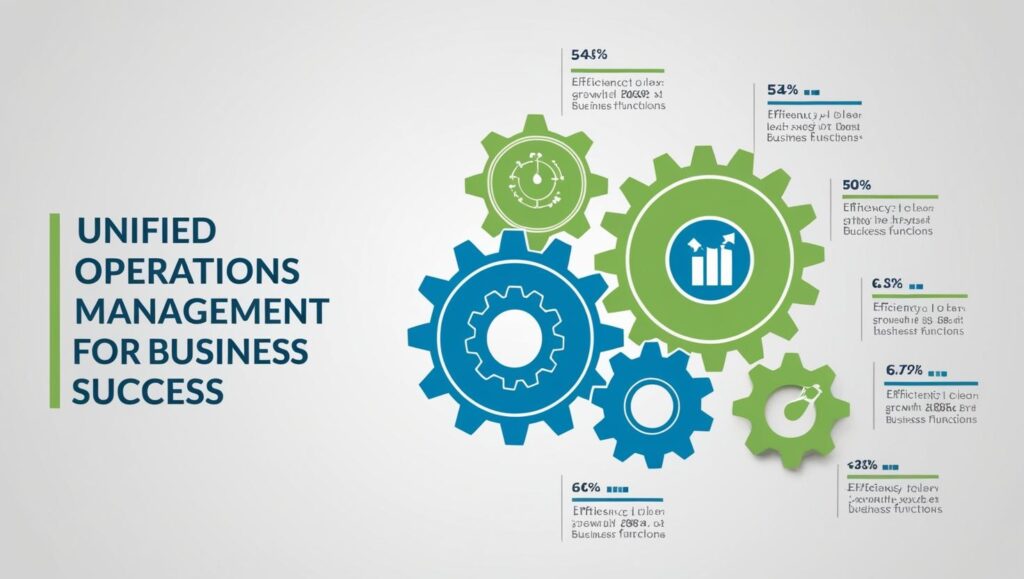In today’s fast-paced digital economy, businesses must be agile, efficient, and seamlessly coordinated to stay competitive. As companies grow and evolve, so do the complexities of managing day-to-day operations. This is where Unified Operations Management comes into play—a modern solution to an age-old business challenge. But what exactly is unified operations management, and why is MUN-C the perfect implementation tool?
What is Unified Operations Management?
Unified operations management refers to the integration of various business processes and operational activities into a single, cohesive platform. Rather than relying on multiple tools for HR, task tracking, payroll, and communication, businesses are now streamlining their operations under one umbrella. This ensures better visibility, increased productivity, and reduced redundancies.
Moreover, this strategy doesn’t just improve efficiency—it transforms the way a business functions. From small startups to large enterprises, companies benefit by reducing operational silos, increasing collaboration, and optimizing resource allocation.
Why Is It Necessary?
Businesses are constantly juggling multiple functions: human resources, project management, finance, attendance, and task delegation—to name a few. Without a unified approach, these functions often operate in isolation, leading to communication breakdowns and workflow disruptions.
For instance, when HR software doesn’t sync with payroll systems, it leads to errors and wasted time. Similarly, if team leaders can’t track attendance or allocate tasks efficiently, productivity drops. Therefore, integrating all these processes into one system allows for smoother, more strategic decision-making.
Transitioning to Unified Operations: The Challenges
While the benefits are obvious, transitioning to a unified operations system is not always easy. Businesses may face several hurdles, such as:
- Resistance to change from employees.
- High upfront costs of implementation.
- Difficulty in migrating legacy data.
However, despite these challenges, the long-term gains far outweigh the short-term hurdles. Especially when using a system like MUN-C, the migration becomes significantly smoother thanks to its user-friendly interface and scalable functionality.
How MUN-C Simplifies Unified Operations Management
At the heart of unified operations management lies the need for an all-in-one tool that can adapt, scale, and simplify. MUN-C does just that.
1. All-in-One Dashboard
First and foremost, MUN-C provides a centralized dashboard that gives business leaders a real-time overview of all critical operations. Whether you’re monitoring employee attendance, tracking tasks, or reviewing payroll—everything is available at a glance.
2. Seamless Attendance Management
In today’s hybrid work model, keeping tabs on employee attendance can be challenging. Fortunately, MUN-C offers an intelligent, cloud-based employee attendance management system that ensures accuracy and transparency. Employees can log in from any location, while managers can easily monitor attendance trends and generate reports.
3. Streamlined Task Tracking and Allocation
Additionally, managing multiple teams and projects becomes effortless with MUN-C’s task tracking feature. Managers can assign tasks, set deadlines, and monitor progress without switching platforms. Consequently, it eliminates delays and ensures accountability across departments.
4. Automated Payroll and Salary Processing
Instead of manually processing payroll each month, MUN-C automates the entire procedure. It calculates salaries, tracks leaves, and generates payslips with minimal human intervention. This not only saves time but also reduces the risk of errors.
5. Scalable for All Business Sizes
Whether you run a 10-person startup or a 500-employee enterprise, MUN-C scales to meet your needs. You can start with core modules and gradually integrate additional features as your business expands.
Benefits of Unified Operations Management with MUN-C
Implementing a solution like MUN-C for unified operations offers a host of benefits:
- Improved Productivity: Since everything is connected, employees spend less time switching between platforms and more time focused on value-driven tasks.
- Enhanced Collaboration: Teams work together more effectively because all communication and data are centralized.
- Data-Driven Decisions: With real-time analytics and reporting, managers can make smarter, faster decisions.
- Cost Efficiency: Managing operations through one platform reduces software costs and minimizes operational inefficiencies.
- Compliance Made Easy: MUN-C automatically keeps records up to date, which helps ensure compliance with labor laws and industry standards.
Real-World Example: How MUN-C Transformed Operations
Consider a mid-sized tech company that recently shifted to remote operations. Before adopting MUN-C, the team struggled with inconsistent attendance logs, delayed payroll, and inefficient task delegation. After implementation, the company experienced:
- A 40% reduction in task delays.
- Complete accuracy in payroll processing.
- Real-time attendance tracking for all employees.
Clearly, adopting unified operations management through MUN-C made a tangible difference.
Why Now Is the Time to Embrace Unified Operations
Businesses can no longer afford to operate in silos. As competition intensifies and customer expectations rise, agility and efficiency become non-negotiable. That’s why now—more than ever—is the right time to shift to a unified operations management model.
Fortunately, platforms like MUN-C remove the guesswork from the transition process. Its intuitive design, customizable features, and robust support make it an ideal solution for modern businesses.
Final Thoughts
In conclusion, unified operations management is not just a trend—it’s the future of efficient business operations. It promotes synergy, enhances communication, and ensures that all parts of the organization are aligned with strategic goals.
If you’re ready to streamline your operations and eliminate inefficiencies, look no further than MUN-C. From attendance to payroll to task tracking, MUN-C does it all—seamlessly and efficiently.
To explore MUN-C’s features in-depth or to stay updated with similar content, visit https://digitalmunc.sbs
